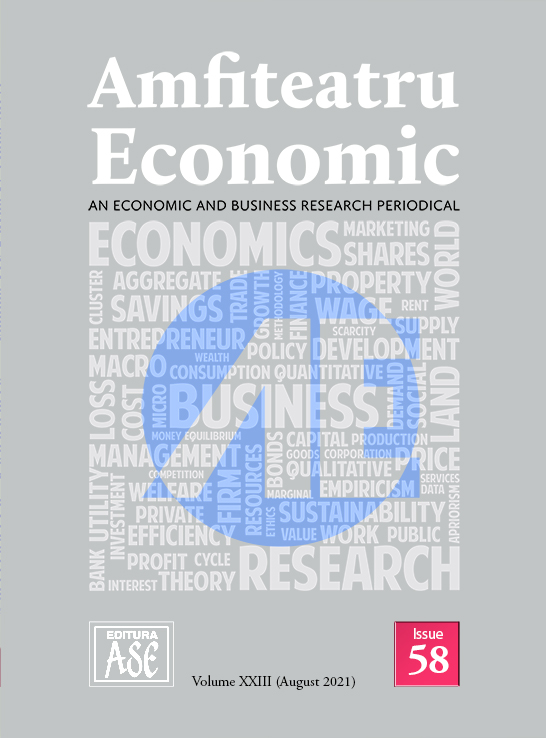Determinants of Employees’ Option for Preserving Teleworking After the COVID-19 Pandemic
Determinants of Employees’ Option for Preserving Teleworking After the COVID-19 Pandemic
Author(s): Georgiana-Camelia Georgescu (Crețan), Rodica GHERGHINA, Ioana Duca, Mirela Anca Postole, Carmen ConstantinescuSubject(s): Business Economy / Management
Published by: EDITURA ASE
Keywords: teleworking;flexible work; human resources; pandemic; LOGIT model;
Summary/Abstract: The measures imposed by the governments to stop the spreading of SARS-CoV-2 virus, especially those referring to the mandatory character of physical distancing, determined more and more organizations to introduce teleworking, starting with March 2020. This paper analyses the factors that influence the option of the employees to continue teleworking also during the COVID-19 post-pandemic period. The research relies upon a survey conducted onto 377 persons living in Bucharest and neighbouring zones, who had at least 20 active days of teleworking during the emergency and/or alert state established by public authorities due to the pandemic. In order to identify the determining factors of the decision to continue with teleworking after the end of this pandemic, the answers were processed following a LOGIT-type model. The results of the research show that there are no statistically relevant relations between the desire to continue with teleworking and factors as: legal nature of the company’s capital (private capital, state capital or mixed), education level, sex of the responding person, employer’s training regarding the pandemic issue, the logistics the employer provided, and, surprisingly, the advantages and disadvantages the future brings in the case of this type of working. However, the bias to continue with teleworking significantly depends on three factors: the field of activity, the age of the employee, and the general evaluation of the experience that the involved persons had with ”remote” working. Thus, the probability to desire to go on with teleworking even after the end of the pandemic increases if the field of activity is IT and also if the persons are younger, while an experience with working from home evaluated as being rather unpleasant leads to a statistically relevant reduction of the probability of a person to desire to go on with teleworking.
Journal: Amfiteatru Economic
- Issue Year: XXIII/2021
- Issue No: 58
- Page Range: 669-682
- Page Count: 14
- Language: English

